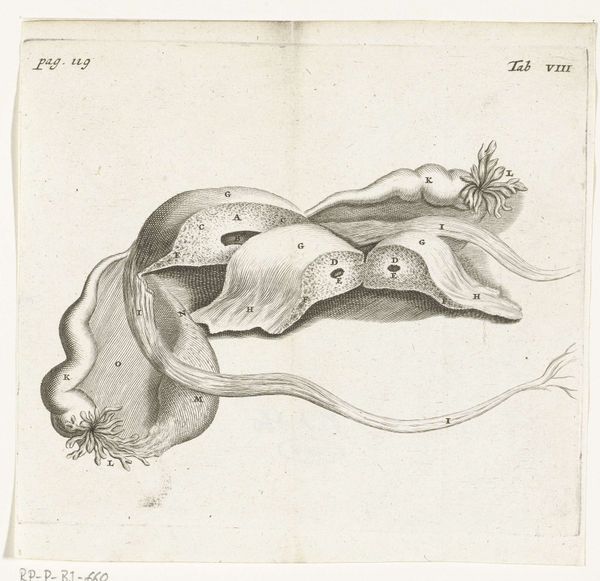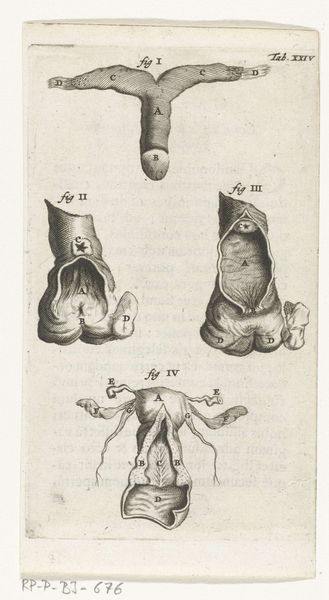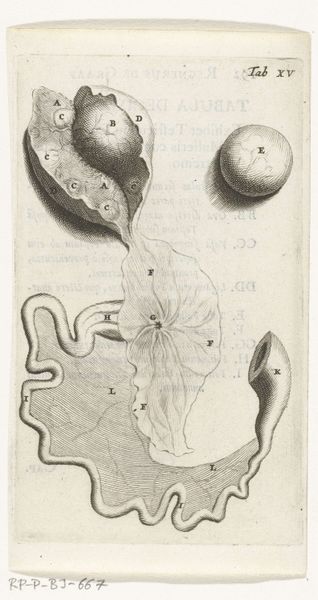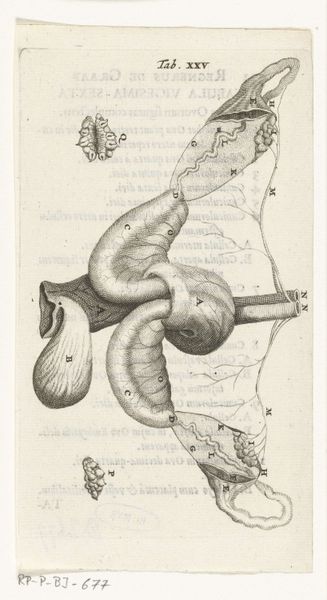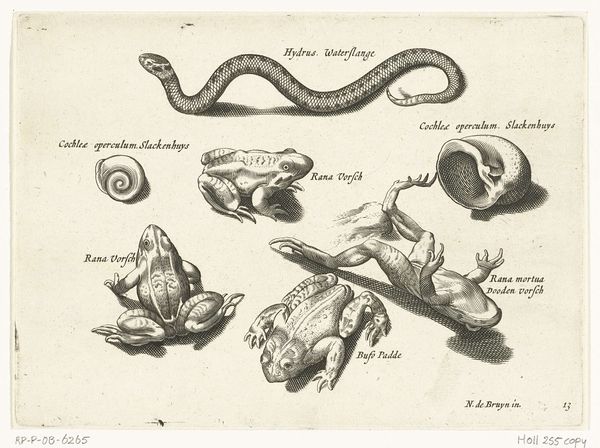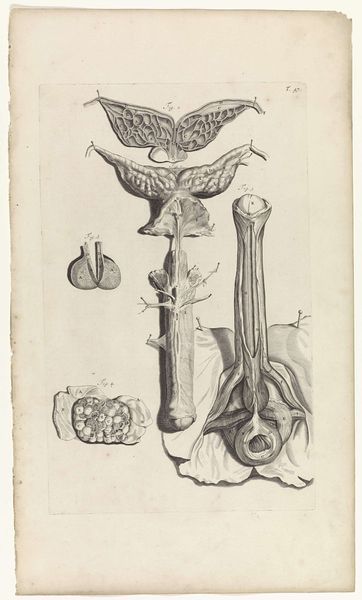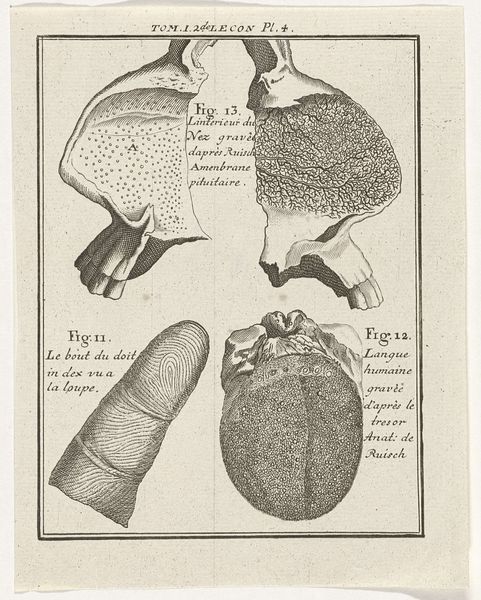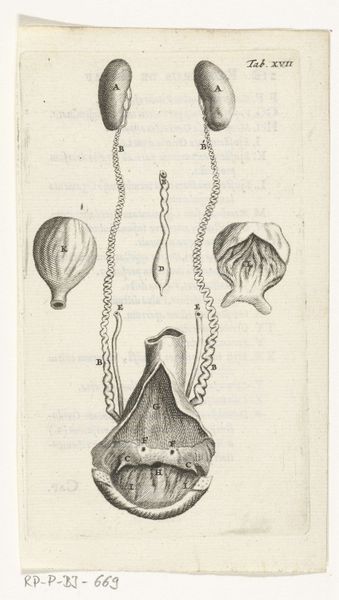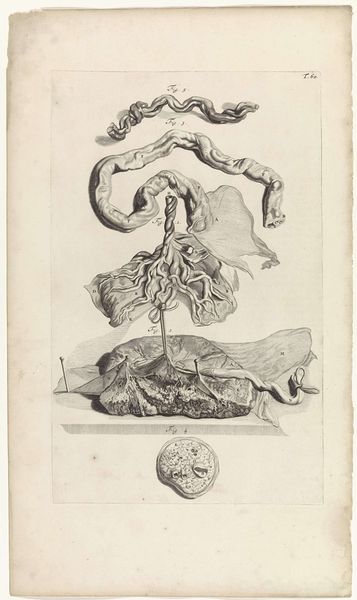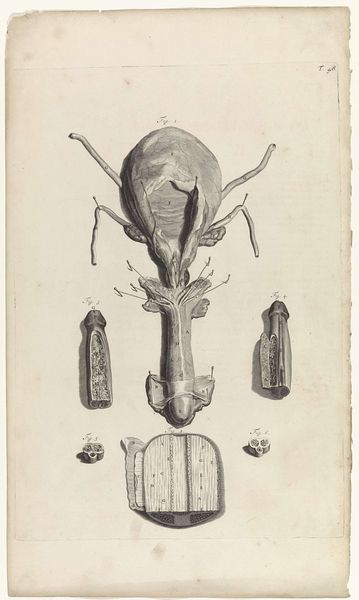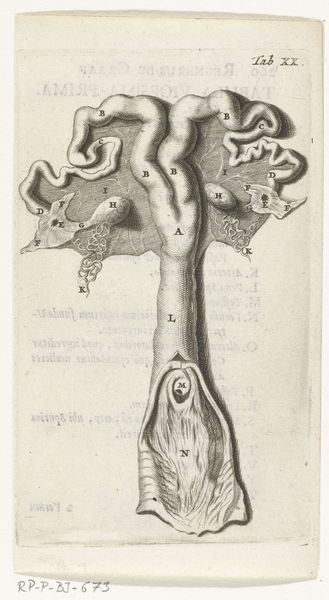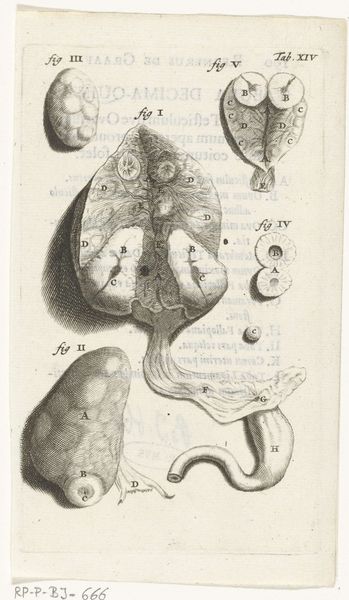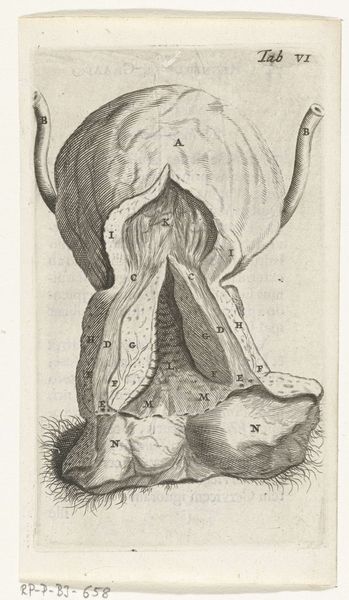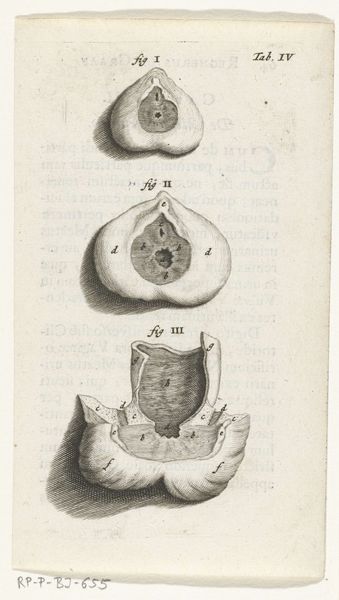
Anatomische afbeelding van verschillende vrouwelijke geslachtsdelen 1672
0:00
0:00
drawing, print, ink, engraving
#
drawing
#
baroque
# print
#
ink
#
history-painting
#
academic-art
#
nude
#
engraving
Dimensions: height 140 mm, width 80 mm
Copyright: Rijks Museum: Open Domain
Editor: This is "Anatomische afbeelding van verschillende vrouwelijke geslachtsdelen," or "Anatomical depiction of various female genitals," created in 1672 by Hendrik Bary. It’s an ink drawing and engraving currently held at the Rijksmuseum. I find the composition very intriguing, particularly the way Bary uses line to delineate these complex forms. What catches your eye? Curator: The interplay between line and form is indeed the key structural element here. Observe how the varying line weights create depth and volume. Bary meticulously renders each anatomical element, prioritizing clarity and precision. How does the academic rendering serve its cultural function? Editor: It feels very detached and clinical. The stark contrast and shading emphasize the subject’s almost alien form, but isn't it just a study? How would this drawing be regarded back in 1672, and now? Curator: Its value as an instructional tool cannot be understated. It presents the body as a rational structure, reinforcing a specific system of knowledge and control, consistent with the empiricist ideology blooming at the time. Now, how can our semiotic and structural analysis tell us more about function rather than just the form itself? Editor: I see what you mean! Studying this piece really highlights how much anatomical illustration has changed, focusing much less on abstract idealization. Thanks for highlighting how the form embodies its function. Curator: Indeed. By deconstructing the visual language, we begin to see how even the most ostensibly objective representations are laden with ideology and power. The intrinsic is always related to the extrinsic.
Comments
No comments
Be the first to comment and join the conversation on the ultimate creative platform.
